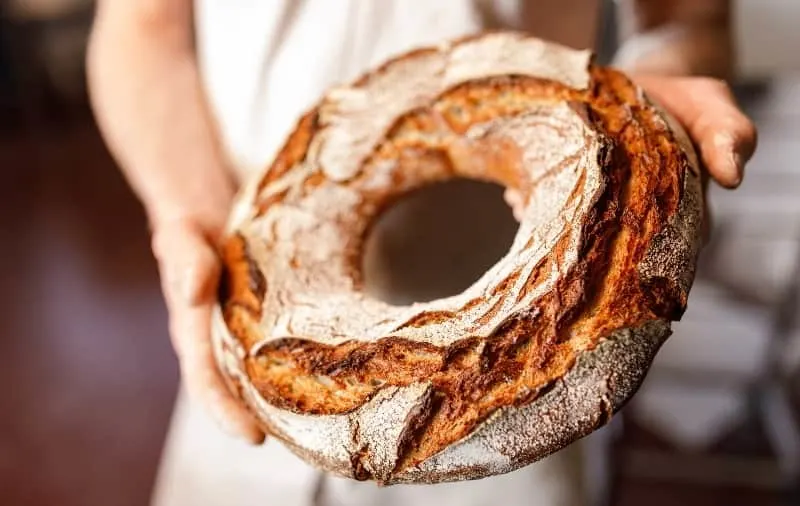When you went to eat that load of delicious bread, was the bread crust too hard? Your bread might be light and fluffy in the center, but it can ruin the whole loaf if the crust is too hard.
There are some mistakes you can make that cause your crust to become too tough, so it’s a good idea to identify where you’ve gone wrong so you can make the perfect loaf of bread next time.
A thick and hard crust on your bread is primarily caused by overbaking or baking in a temperature that’s too high. Make sure that you adjust the temperature of your oven to suit the type of bread that you’re making.
If you’re making different types of bread and they’re consistently coming out with really thick and hard crusts every time, you might need to tweak your recipe, technique, or cooking method slightly.
If your bread crust is burning, then there may be other factors causing this. Take a quick look at my article about why some bread crust can burn and what you can do about it.
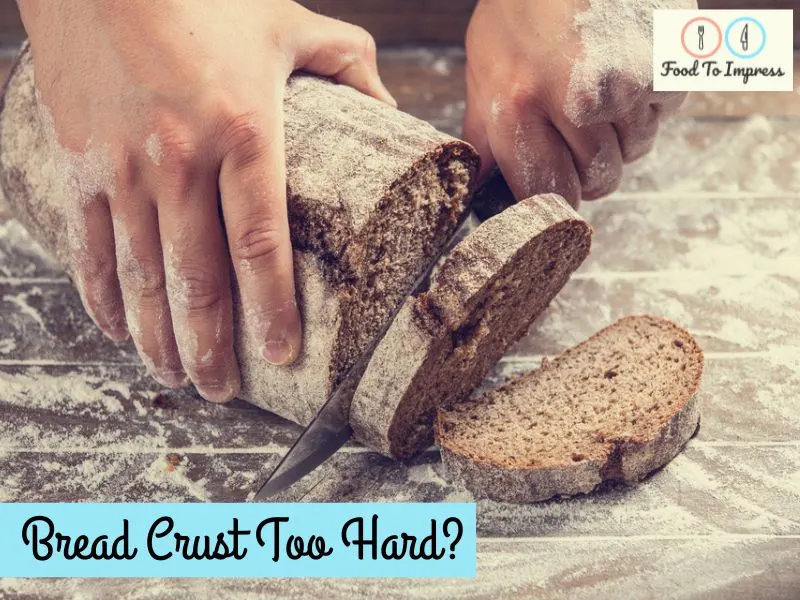
Why Is My Bread Crust So Hard?
It can be difficult to figure out what you’re doing wrong as there are a number of things that can contribute towards why your bread crust is too hard, but you should go through these causes and try to identify what you’re doing that’s causing your problem.
If you’re like me at all, you’ll like a crispy crust, but you don’t want it to be so thick and sharp that it cuts your gums. To get the best results, spare a couple of minutes to read my article about how to get the perfect crust. It’s not long and you’ll be glad you read it.
Overbaking
When you put bread in the oven, the first thing to cook is the exterior, forming the crust. If you’re baking your bread for too long, the crust will become hard rather than soft or just slightly crispy.
If you’re not sure when your bread is baked, you can test it by taking it out of the oven and tapping the base of it. You should hear a hollow sound if your bread is cooked through.
Alternatively, you could use a food thermometer and prod it into the thickest part of the bread. You’ll know your bread is cooked through when the thermometer reads 190 – 210°F (88 – 99°C) depending on what bread you’re baking.
Using A Temperature That’s Too Hot
If the temperature of your oven is too hot, you’re likely cooking your crust too fast so it gets hard before your bread gets a chance to cook through fully. Take another look at the recipe and make sure that the temperature you’re using is correct.
It’s important that you check that your oven is heating to the right temperature. An oven’s thermostat isn’t always accurate and may need reconfiguring after some time. You can check the temperature of your oven by using an infrared thermometer. Alternatively, you can get a professional to check over your oven and make sure it’s right.
If you know that the temperature of your oven is correct, consider using a slightly lower temperature. This will help you control how fast your crust browns and you should theoretically be left with a softer exterior.
Check that you’re using the right oven for the recipe. For example, a fan (convection) oven cooks bread faster than a non-fan (conventional) oven. It’s around 20°C hotter, so you need to adjust the temperature of a fan oven accordingly. Here’s an article I’ve written on the pros and cons of these two ovens and which one is best.
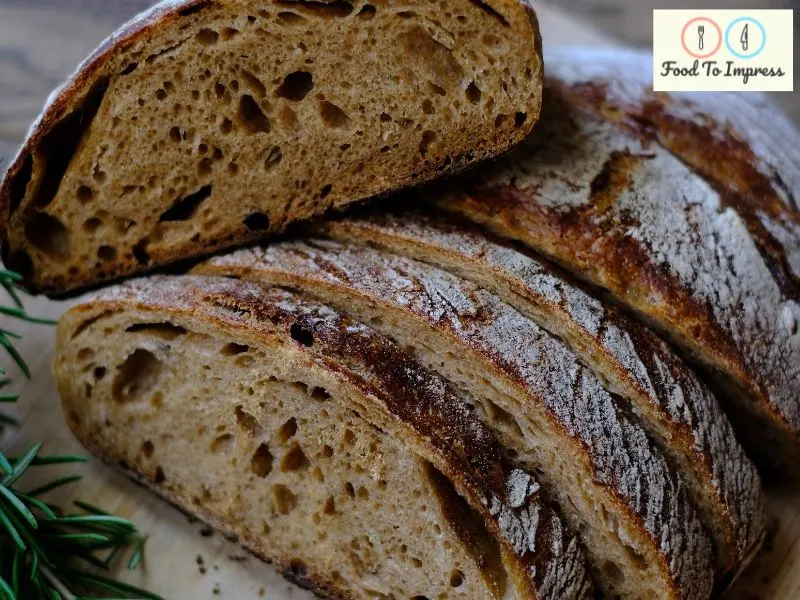
Your Dough Was Lacking Moisture
If your dough is lacking moisture, it can cause it to dry out faster in the oven and lead to a very hard and almost inedible crust.
The flour to water ratio you use in your dough and the humidity of your environment can affect how much your dough dries out.
You want to make sure that you’re not adding too much flour to your dough. Follow the recipe properly and try to get out of the habit of kneading with flour. If you can, avoid incorporating any more flour than you need to. I’ve written an article here about how using too much flour can be a leading cause of dry, dense, and crumbly bread.
If you’re living in a particularly dry climate, your dough can lose moisture from just sitting there. This can dry out your dough and leave a nasty crust. It’s a good idea to add a little extra water to your dough or keep it in an airtight container to minimize moisture loss.
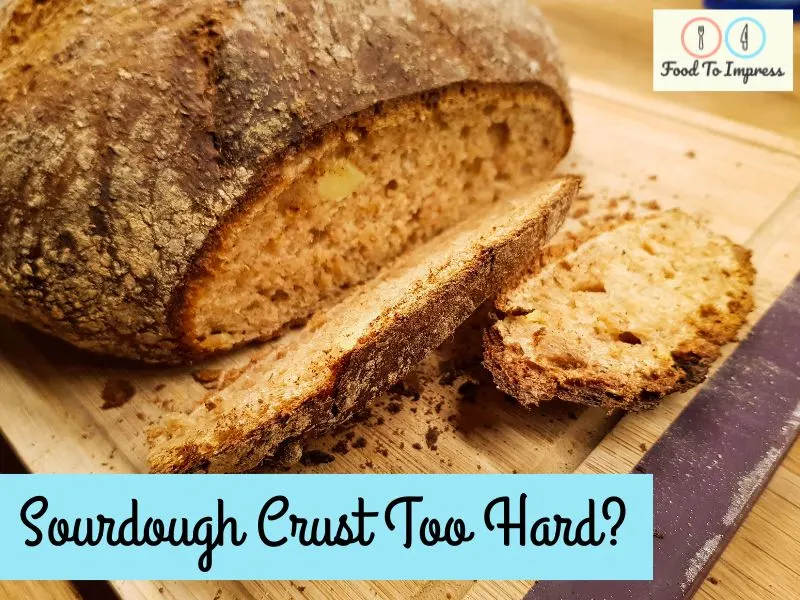
Why is My Sourdough Crust Too Hard?
When making sourdough bread, it can be frustrating if you find that the crust is too hard. This issue is typically caused by not enough moisture in the dough.
To help combat this, try using a pastry brush to dab some water onto the baked sourdough loaf before it goes into the oven. This will allow the crust to steam up during baking and become softer. Also, make sure that you are mixing the sourdough longer than usual as overmixing can create an overly firm crust as well. With just a few simple adjustments to your sourdough recipe, you should be able to get a perfectly soft sourdough crust for your bread every time!
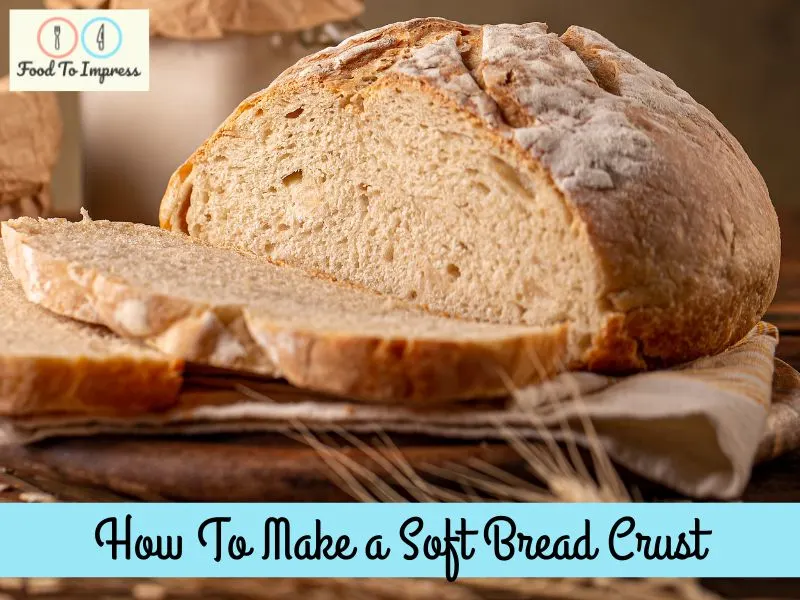
How To Make A Soft Bread Crust
If your homemade bread crust is too hard and extra crispy, you’re going to want to find a way to make it softer and easier to eat. There are some things you can do during the breadmaking process that will soften the crust of your bread and make it much nicer overall.
Enrich Your Dough
You can drastically change the flavor and overall softness of your bread by just changing the ingredients a little. By adding milk, eggs, butter, or oil, you can do a lot to create extremely soft and delicious bread without worrying about a developing a hard crust.
Find a recipe that includes some sort of softening ingredient in it and give it a try. You might prefer it.
Stay Away From Dark Metal Cooking Tins
It’s best to use light-colored baking tins like aluminum or stainless steel without a coating when you’re baking your bread as dark tins can cook everything a little faster.
Light tins can reflect heat whilst dark baking tins tend to absorb heat and hold onto it for longer.
For this reason, dark tins can leave you with a darker and harder crust that may be overcooked.
Use A Pullman Tin
A Pullman tin is a straight-sided loaf tin with a lid. What this does is give you a uniform and light crust all-around your bread.
The one problem is that it stops your bread from rising out of the tin. Loaves of bread made in this tin are consistent in size and make great sandwiches.
If you’re not a fan of bread with a perfectly flat top and edges, this isn’t for you.
Brush It With Butter After Baking
Even if your bread does come out crispier than you might like, you can soften it using this method.
To make your bread softer after baking, you can brush some melted butter on top of it and let it soak in. This helps to make your crust more edible and tasty.
Make sure to apply a generous amount to soak the crust enough that it softens it.
Store It In A Plastic Bag
The way you store your bread affects how crispy the crust stays.
Typically, people want to keep their bread in the same state as it is after baking, so it would be stored somewhere like a bread bin or a cupboard, but if you put it into a tight plastic bag after it’s cooled down, you’ll be able to soften the exterior.
The next time you are stuck wondering “why is my bread crust too hard?”, remember these tips above to get a soften loaf of bread!
Frequently Asked Questions about Bread Crust Being Too Hard
Why is the crust of my bread so hard?
The crust of your bread may be hard due to baking at a high temperature for too long, insufficient steam during the baking process, or over-kneading, which can create a dense bread with a harder crust.
How do I make my bread crust softer?
To make your bread crust softer, cover it with a damp cloth after it comes out of the oven and cools slightly. This helps keep moisture in the crust. Additionally, adding fat (like oil or butter) to your dough can also result in a softer crust.
What is the secret to a soft crust?
The secret to a soft crust is adding fat to the dough and ensuring enough steam during baking. Wrapping the hot bread in a damp cloth after baking can also result in a softer crust.
Why is the crust of my baguette hard?
The crust of your baguette could be hard due to a baking process with high heat and steam, which are used traditionally to achieve a crisp crust. If it’s excessively hard, it might be due to over-baking or an overly dry baking environment.

